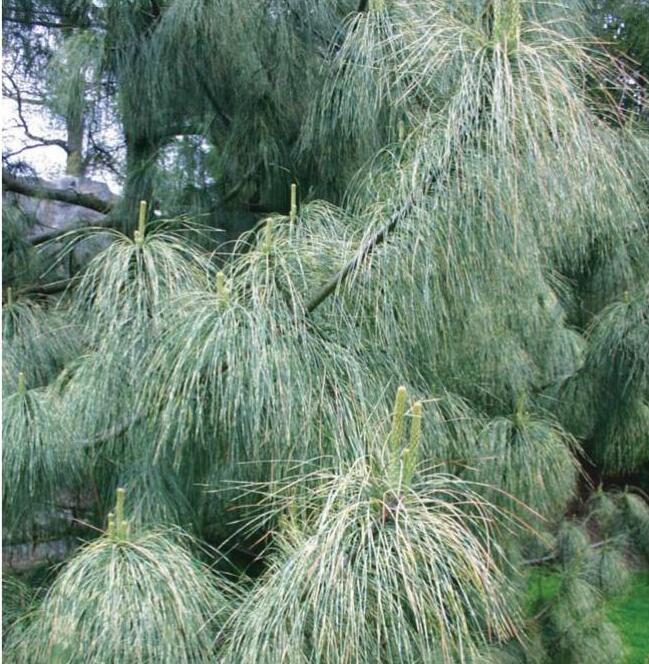HIMALAYAN WHITE PINE

About 50 million years ago,
India was a large island off the Australian coast.
In one of the great tectonic movements of the Earth’s crust, India sailed off northward at a rate of about 1.5 inches a year, crunching into the Asian land mass. It heaved up the hulking Eurasian plate and created the east-west-oriented Himalayan mountains and the high, lonely stretches of Tibet.
From Afghanistan on the west to Tibet on the east, the Indian plate slowly crunched northward, but on its eastern side, it also crunched eastward, forming north–south mountains. A look at a topographical map shows these folded ranges, where a horticultural menagerie of plants found nowhere else on earth can be located.
Why the geology lesson? Because in the northern part of the Indian plate, from the high deserts of Afghanistan, east across the Hindu Kush and Karakoram mountain ranges and then down into the north-south ranges around Yunnan, China, is the land where the final selection in our 2023 series of specimen plants is native: Pinus wallichiana.
Other common names of this pine are Bhutan pine, Himalayan white pine and blue pine—among several more. The “blue” refers to the bluish cast of the needles, especially in the subspecies ‘Nana.’
Denne historien er fra November - December 2023-utgaven av Horticulture.
Start din 7-dagers gratis prøveperiode på Magzter GOLD for å få tilgang til tusenvis av utvalgte premiumhistorier og 9500+ magasiner og aviser.
Allerede abonnent ? Logg på
Denne historien er fra November - December 2023-utgaven av Horticulture.
Start din 7-dagers gratis prøveperiode på Magzter GOLD for å få tilgang til tusenvis av utvalgte premiumhistorier og 9500+ magasiner og aviser.
Allerede abonnent? Logg på

GARDEN GOAL: MORE SPRING BULBS
Take these five steps now to ensure a better bulb display next spring
SAY HELLO TO HELICONIAS
Tired of the same ol' cannas or dahlias in your summer garden scheme? It's time to get acquainted with heliconias

PENSTEMONS ARE PERFECTION
THIS NORTH AMERICAN GENUS OFFERS INTRIGUING FLOWERS ON DROUGHT-TOLERANT PLANTS

A LIVELY LANDSCAPE
Historic garden cemeteries, such as Rhode Island's Swan Point, can delight a visiting plant lover

REALLY GOOD ROSES
The latest cultivars to prove themselves in nationwide trials

BOBBY WARD A scholar of plants and plantspeople
BOBBY WARD IS ONE of the most respected names in the world of horticulture.

BUDBURST
Gardeners can help scientists understand plants' responses to climate change

TANGLING WITH VINES
I'M GUESSING that vines, pound for pound, produce the highest ratio of leaf surface per support structure of any terrestrial plant.

HEADING NORTH
AS WINTERS TREND WARMER, NORTHERN GARDENERS CAN TURN TO THESE PROMISING SOUTHERN NATIVES

Unbridled COLOR Combos
PAIR A BRIGHT-LEAVED MAIN CHARACTER WITH EQUALLY BOLD COMPANIONS FOR LASTING DRAMA IN THE GARDEN
